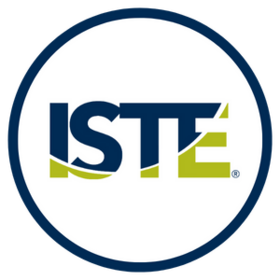
Learn about how AI is helping student creators build in schools.
- Subject:
- Educational Technology
- Professional Learning
- Material Type:
- Reading
- Provider:
- ISTE
- Provider Set:
- Artificial Intelligence
- Date Added:
- 08/28/2024

This collection includes AI resources from the International Society for Technology in Education.

Learn about how AI is helping student creators build in schools.

The projects in this guide use a student-driven approach to learning. Instead of simply learning about AI through videos or lectures, the students completing these projects are active participants in their AI exploration. In the process, students work directly with innovative AI technologies, participate in “unplugged” activities that further their understanding of how AI technologies work, and create various authentic products—from machine learning models to video games—to demonstrate their learning.
Project 1: Programming with Machine Learning
Project 2: AI-Powered Players in Video Games
Project 3: Using AI for Robotic Motion Planning
Project 4: Machine Learning as a Service
Visit the ISTE website with all the free practical guides for engaging students in AI creation: https://www.iste.org/areas-of-focus/AI-in-education

This guide provides student-driven projects that can directly teach subject area standards in tandem with foundational understandings of what AI is, how it works, and how it impacts society.
Instead of simply learning about AI through videos or lectures, the students completing these projects are active participants in their AI exploration. In the process, students work directly with innovative AI technologies, participate in “unplugged” activities that further their understanding of how AI technologies work, and create various authentic products—from presentations to designing an AI robot—to demonstrate their learning.
• Project 1: What AI Does Well and Does Not Do Well
• Project 2: Training Data and Machine Learning
• Project 3: Senses vs. Sensors
• Project 4: Navigation and AI
Visit the ISTE website with all the free practical guides for engaging students in AI creation: https://www.iste.org/areas-of-focus/AI-in-education

This guide provides student-driven projects that can directly teach subject area standards in tandem with foundational understandings of what AI is, how it works, and how it impacts society. Several key approaches were taken into consideration in the design of these projects. Understanding these approaches will support both your understanding and implementation of the projects in this guide, as well as your own work to design further activities that integrate AI education into your curriculum.
Project 1: AI Chatbots
Project 2: Developing a Critical Eye
Project 3: Using AI to Solve Environmental Problems
Project 4: Laws for AI
Visit the ISTE website with all the free practical guides for engaging students in AI creation: https://www.iste.org/areas-of-focus/AI-in-education

In this guide, students’ exploration of AI is framed within the context of ethical considerations and aligned with standards and concepts, and depths of understanding that would be appropriate across various subject areas and grade levels in K–12. Depending on the level of your students and the amount of time you have available, you might complete an entire project, pick and choose from the listed activities, or you might take students’ learning further by taking advantage of the additional extensions and resources provided for you. For students with no previous experience with AI education, exposure to the guided learning activities alone will create an understanding of their world that they likely did not previously have. And for those with some background in computer science or AI, the complete projects and resources will still challenge their thinking and expose them to new AI technologies and applications across various fields of study.
Project 1: Fair's Fair
Project 2: Who is in Control?
Project 3: The Trade-offs of AI Technology
Project 4: AI and the 21st Century Worker
Visit the ISTE website with all the free practical guides for engaging students in AI creation: https://www.iste.org/areas-of-focus/AI-in-education.

When surveyed last spring, half of teachers felt that artificial intelligence (AI) would make their jobs more challenging. Even more noteworthy, 96% reported not receiving any training on the topic of AI. In our own small survey at New York’s NYSCATE Annual conference last November, we saw a range of emotions on the topic from excitement to fear. Teaching digital citizenship, a broad multidisciplinary subject, was already challenging. But how to incorporate emerging AI technologies into it?

As educators, we strive to create personalized learning experiences for every student and every class. However, with limited time, this can be challenging. What if we could enhance this practice with artificial intelligence?

When I became a coach at St. Vrain Valley Schools more than a decade ago, I was passionate about supporting early-career teachers. That passion remains today. There’s nothing more fulfilling than providing effective coaching to help my colleagues develop and grow.